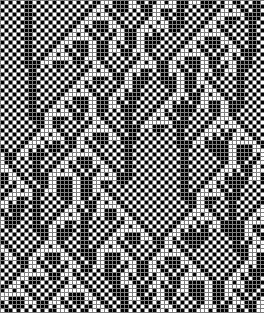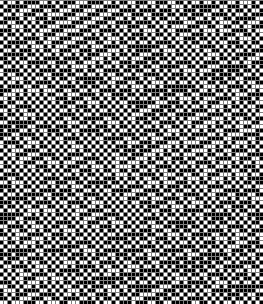 |
Projects
I am primarily interested in exploring the use of
adaptive systems as mechanisms for live performance and installation. Aesthetically, I am interested, not so much in capturing existing
styles of music, but more in exploring other 'possible' musics (in an Alife sense). The development of these systems can be practically and conceptually seperated into seperate areas:
:: interactive music systems [2004 ...] : exploring different ways of utilising the responsive nature for aesthetic interactions.
:: sonification [2004] : mapping the output of formal systems into sound
:: algorithmic generative composition [2004] : finding systems that produce dynamics that are useful musically when mapped into sound
Interactive Systems
[click on pictures for more]
Fond Punctions
| Fond punctions is a live improvised performance for acoustic instrument(s) and digital generative system.
properly wicked
IT, mashcore laptopist music informatics students
i was completely awestruck
EH, contemporary classical composer
|
|

|
Self karaoke pond
| Self Karaoke Pond is an interactive audio installation which makes the user do some work.
I like wen it rkordid me becose the little sound as a bit like me (sic). Lilly age 6
|
|

|
Ashby's Grandmother's footsteps
| Ashby's Grandmother's Footsteps is an interactive audio installation which challenges you to turn it off.
|
|

|
|
Sonification
Musicians or artists using mathematical models for artistic means generally assume that the dynamics or structures which have formal appeal also have aesthetic appeal. This in turn assumes that they can be appreciated when mapped onto auditory parameters.
The aim of this project was to test this assumption by investigating whether people could classify the qualitatively different states produced by different cellular automata rule sets.
:: cellular automata ::
Cellular automata have been used extensively in algorithmic composition. Rule sets can be categorised mathematically (according to a measure of entropy variance in the look up table (Wuenshce)) into one of three classes: ordered, complex or chaotic. These classes can be readily distinguished from a graphical representation of the global CA states which provides a convenient means for testing whether similar classifications can be made from an auditory representation.
I developed mappings which defined rhythmic and harmonic variation according to individual cell states and entropy variance for 1 dimensional CA rules. Listeners were then required to classify each sequence as either chaotic, ordered, or complex, using either audio only, visual, or audio visual displays. Scientists and musicians were tested, and although both groups found it most difficult to make correct classifciations using the audio only display, they could make correct classifications significantly greater than chance.
For details please see Issues in Auditory Display
:: homeostat ::
Audio representations are particularly useful for comprehending high-dimensional continous data such as neural network outputs. I first started using audio as a debugging technique whilst developing an implementation of Ashby's homeostat. The following examples demonstrate how easily we can hear the global state of a network.
In many situations this is true, and is exploited in auditory display or sonfication, a sonic alternative to graphical visualisation techniques which should be used more often - especially in computational modelling!.
 ... unstable
... unstable
 ... oscillate-unstable-oscillate
... oscillate-unstable-oscillate
 ... unstable-oscillate
... unstable-oscillate
Mechanisms for Algorithmic Composition
::hybrid systems: homeostat and cellular automata::

In an early project, CAs were combined with a modified homeostatic network. Outputs from the homeostat are used to define pitch changes; the CA states are used to define when notes play. The following extracts give examples from early in development; some include a 'melody' line, the timings of which were determined by a simple stochastic method
For details please see Adaptive Systems Music
MSc Thesis 2002
samples of loops recorded during development of homeostat and CA system:
 ... simple.wav
... simple.wav
 ... hispeed.wav
... hispeed.wav
 ...
slow.wav
...
slow.wav
 ... sines
(commissioned for LUX:open
festival of film april 2003):
... sines
(commissioned for LUX:open
festival of film april 2003):
generated using homeostat to control amplitudes of 10 sine tones in
AudioMulch.
 ... Example output from a final version of this system (8.75M)
... Example output from a final version of this system (8.75M)
::neural oscillators::

Neural oscillators are models of toy neurons. Two 'neurons' are arranged
in mutual inhibition such that they oscillate. For a certain (fairly large
range) of parameter settings, the nodes will entrain the frequency of an input
signal. This entrainment property has proved useful in beat induction tasks, and in rhythmic robotics tasks. Musically this provides a mechanism for creating a sense of ensemble in a network of oscillators.
snippets from early development (apologies - dodgy MIDI implementation):
 ... Output of 2 nodes with similar natural frequencies out of phase
... Output of 2 nodes with similar natural frequencies out of phase
 ... Output of 4 nodes with similar natural frequencies
... Output of 4 nodes with similar natural frequencies
 ... changing weights between 2 nodes
... changing weights between 2 nodes
 ... output of one node with greater low natural frequency relative to rest of network
... output of one node with greater low natural frequency relative to rest of network







